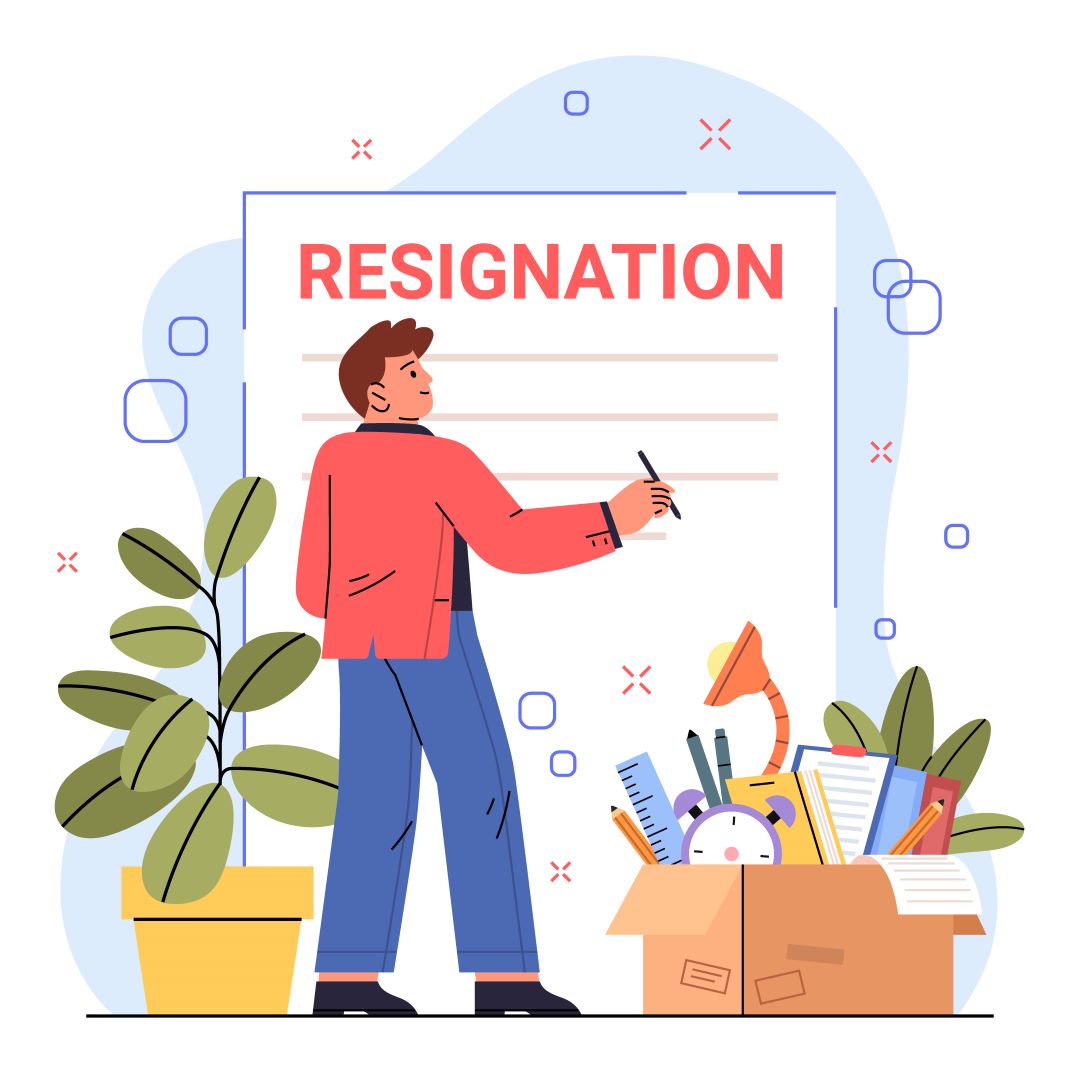How to write a resignation Letter
Writing a resignation letter is a pivotal moment in your professional life. It’s a formal way to communicate your intention to leave your current job, and how you craft this letter can significantly impact your reputation and future opportunities. In this blog, we’ll guide you through the steps to write a professional and effective exit letter that leaves a positive impression.
Importance of Drafting a Resignation Letter
Drafting your resignation letter is crucial for several important reasons:
- Formal Notice: A resignation letter serves as a formal notice to your employer of your intent to leave the company. It’s an official document that initiates the process of your departure. Without a written resignation, your departure may not be processed, and it can lead to confusion or misunderstandings.
- Professionalism: Writing a resignation letter is a professional and courteous way to communicate your decision. It demonstrates your respect for the company and your commitment to following proper procedures.
- Legal Requirement: In some cases, your employment contract or company policies may require you to provide written notice of your resignation. Failing to do so could result in breaches of contract or other legal issues.
- Clarity: A well-drafted resignation letter ensures that there is no ambiguity regarding your last working day and your intent to leave. This clarity helps your employer make the necessary arrangements for your departure.
- Documentation: Your resignation letter provides a written record of your decision, which can be valuable for both you and your employer. It serves as evidence that you initiated the resignation process and can help prevent disputes or misunderstandings in the future.
- Legal Protection: If your resignation is subject to legal, contractual, or policy considerations, having a well-drafted resignation letter can safeguard your rights and ensure compliance with relevant regulations. It can also protect you from potential legal issues.
- Stress Reduction: Knowing that you have a well-composed resignation letter ready alleviates the stress of the resignation process. It enables you to communicate your decision thoughtfully and on your terms, reducing anxiety associated with leaving a job.
- Positive Final Impression: A well-written resignation letter allows you to craft a composed, professional, and respectful message, helping you leave a positive final impression with your employer. This can be beneficial for future references and networking opportunities.
How to draft a resignation letter
Here’s a step by step breakdown of all the steps you need to follow while drafting a resignation letter:
Step 1: Start with a Professional Header
Begin your resignation letter with a professional header that includes your name, address, and the date. Below this, add the recipient’s name, title, company, and address. If you don’t have a specific person to address, use a general salutation such as “To Whom It May Concern.”
Step 2: Use a Formal Salutation in your resignation letter
Open your letter with a formal salutation, such as “Dear [Recipient’s Name].” This sets the tone for a professional and courteous communication.
Step 3: State Your Intent Clearly
In the opening paragraph, state your intention to resign from your position. Be concise and clear about your decision. For example, you can write, “I am writing to formally announce my resignation from my position as [Your Job Title] at [Company Name].”
Step 4: Provide Your Last Working Day
In the same paragraph, mention your intended last working day. This is crucial as it helps your employer plan for your departure and transition. Ensure that your last working day aligns with the notice period as per your employment contract or company policies.
Step 5: Express Gratitude
In the middle paragraphs, express gratitude for the opportunities and experiences you’ve had at the company. Share a few positive aspects of your time there, such as professional growth, learning experiences, or positive relationships. This shows your appreciation and leaves a positive impression.
Step 6: Offer Assistance in Transition
Show your willingness to assist in the transition process. Mention that you are open to helping find and train your replacement and ensure a smooth handover of responsibilities. This demonstrates your professionalism and commitment to a seamless transition.
Step 7: Close Professionally
Conclude your resignation letter professionally. Use a complimentary close such as “Sincerely” or “Best regards” followed by your typed name. Sign your name above the typed name to add a personal touch.
Step 8: Proofread and Format your resignation letter
Before finalizing your letter, proofread it carefully for any errors, typos, or grammatical mistakes. Ensure that the formatting is consistent and professional throughout.
Step 9: Deliver Your Letter
Ideally, deliver your resignation letter in person to your immediate supervisor or HR department. If you need to send it via email, follow up with a printed copy to ensure it’s documented properly.
Step 10: Prepare for Discussion after submitting your resignation letter
Be ready to discuss your resignation with your employer. They may have questions or require further information. Approach these discussions with professionalism and a willingness to provide clarity.
Find your dream job with DEIjobs. Sign Up here.
Discover a welcoming community of employers at DEIjobs who are eager to support your career aspirations. Companies are actively seeking candidates with disabilities, women, LGBTQ+ individuals, war veterans, and women on a career break.





